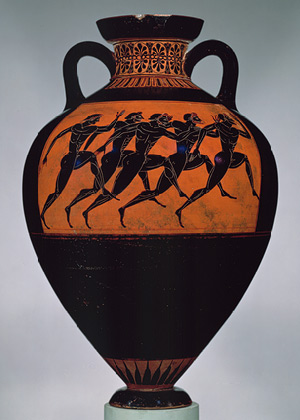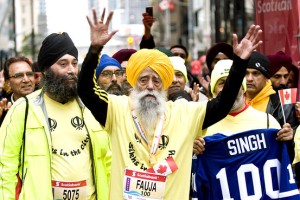
I have a confession. Last year I went to a chiropractor for the first time. I had been having some neck and sacroiliac pain. I went to a massage therapist a few times. Although it felt good, especially for the neck, it didn’t seem to last more than a few weeks at most. Anti-inflammatory medications only gave temporary relief. Thus I was interested in trying something else, particularly when I started having some acute left sacroiliac pain that made it difficult to move around at times. I also had intermittent low back pain, left trochanteric bursitis, knee pain and plantar fasciitis. In Timothy Ferriss’s interesting book, The 4-Hour Body, he recommended active release techniques and a Functional Movement Screen (FMS), which I was curious about and thought might help. When I looked into it more, I found that these were pretty much only offered by chiropractors.
Physicians are trained to be scientific, and tend to dismiss what is called alternative, complementary, or allopathic medicine, including homeopathy, naturopathy, chiropractic, and traditional Chinese medicine. I wanted some relief from my symptoms, and I was also curious about what chiropractors do, so I decided to go there, rather that to physical therapy. Patients often ask me what I think about going to a chiropractor, but I had no personal experience. I justified to myself that it would be like a journalistic endeavor, which it sort of is, now that I’m blogging about it.
I purposely chose a clinic about 12 miles from my office. As I pulled into the parking lot I had second thoughts. I felt like I was breaking a taboo. Even though I figured it was unlikely I would be seen by a patient or anyone else I knew, I looked around before getting out of the car. That evening I told my wife not to tell anyone that I had gone to see a chiropractor.
Fifteen minutes after my scheduled appointment time the chiropractor came out to the waiting room, addressed me by my first name, and said she would be out shortly after reviewing my chart. She was young and attractive and had graduated about two years earlier. She came back and said, “I guess I should be calling you Dr. Ginsberg”. We went back to an exam room and she took a thorough history of the various pains I had. She asked about duration, severity, onset, exacerbating factors and prior injuries. She asked if I’d ever been to a chiropractor before and I said no. She said I was her first also (physician patient)! She asked me about my practice. When I complained about the paperwork, she pointed to her desk and said she has the same problem. Like a lot of doctors fresh out of school, she also had a lot of debt.
Next she did a very thorough musculoskeletal and neurological exam, other than checking cranial nerves and cerebellar function. Her range of motion and testing of strength and sensation reminded me of what I used to do as a medical student and intern, but now often shortcut. She discussed active release techniques then did some, including the Graston Technique. She asked if I was willing to have adjustments and I expressed some hesitation, particularly having it done to the neck. She said had no I had no red flags and that she did did this maybe 20 times a day. I initially agreed to let her adjust my back. After twisting me like a pretzel and throwing on her weight, causing a not unpleasant popping sensation in my back, she told me, “You just had your first adjustment.”
She then did more active release technique on my back, using a special table that moved, making my back flex and extend. Then she did an adjustment on my mid and perhaps upper back. She asked if I wanted to have my neck done, and reminded me of the decreased range of motion I had on one side. I thought about my patients who refused medications for their cholesterol or diabetes for fear of side effects, despite my recommendations, so I reluctantly agreed to trust her expertise. I was a bit nervous and she had to tell me me to relax. It was not especially uncomfortable when she twisted my head suddenly, but I had visions of a farmer breaking a chicken’s neck and I hoped I would not becoming a quadriplegic. Thankfully that did not come to pass.
We talked a little about the traditional distrust physicians have of chiropractors. She said some people just need a quick adjustment, but admitted that 75% of people come in with problems that are due to underlying muscle weakness or imbalance, and that they won’t fix the problem without addressing the issue. She said unfortunately some chiropractors don’t deal with this and only do adjustments. She knew one who had the same patient penciled in for every Friday at the same time for a year.
She said to return, preferably within 3 to 5 days, though I made it a little later due to my schedule, to have another treatment and a Functional Movements Systems evaluation.
I couldn’t really tell a difference after the first session. She warned me I might be sore at first, but I was not. Although massage may help various body aches and pains, I suspect many people like it for the therapeutic touch. I was surprised that chiropractic was similar, and I suspect that’s part of the reason for its popularity.
I later returned for another appointment. I underwent their own functional performance exam with one of the trainers. They said it was more thorough then the Functional Movement Screen. I later found out that FMS is a widely marketed system, for which chiropractors and others pay a lot to get certified, but that’s a different story. In any case, the trainer said that I did pretty well, but was particularly weak in my medial glutes, which surprised me. He recommended at least setting up an appointment to set me up with a home exercise program as I said coming in for regular treatments would be difficult.
Next I had another session with the chiropractor. She again did Active Release Techniques and adjustments. She was unable to adjust my neck as I involuntarily tensed up. I asked her why insurance companies require referrals for physical therapy but not chiropractic. She said it’s because chiropractors can make diagnoses.
I returned one more time to work on various exercises. Although I’ve exercised at the gym for decades, I started incorporating some of the exercises the trainer taught me, and I’ve had very little sacroiliac pain since then.
Scientific data showing the benefit of chiropractic care for back pain is sparse. Recently an article showed benefit in chiropractic care for neck pain, but another showed potential risk.
So what do I tell patients now about chiropractors? For neck and back pain I still preferentially refer patients for physical therapy. If patients ask about getting chiropractic treatment, I am now less likely to object, assuming they don’t have a medical condition that would make it riskier, but I caution them about getting neck adjustments. Just like physicians, not all chiropractors are equally skilled. A good chiropractor probably does a better job evaluating back pain than most primary care physicians, but watch out for those who over treat. Most importantly don’t take the lazy approach of just getting, “adjustments,” but do the work to correcting muscle weaknesses that often cause the problem.

















